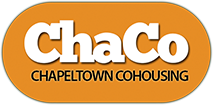Decision-making
At the heart of ChaCo’s decision-making is the idea of consensus.
Voting can often leave a significant minority of people frustrated and over-ruled. Consensus, on the other hand, is a way of making decisions that helps to make sure that everyone’s voice is heard and valued – and the eventual decisions tend to have more buy-in from everyone involved.
According to The Consensus Handbook (published by Seeds for Change):
Consensus decision making is a creative and dynamic way of reaching agreement between all members of a group. Instead of simply voting for an item and having the majority of the group getting their way, a group using consensus is committed to finding solutions that everyone actively supports, or at least can live with. This ensures that all opinions, ideas and concerns are taken into account.
Through listening closely to each other, the group aims to come up with proposals that work for everyone. Consensus is neither compromise nor unanimity – it aims to go further by weaving together everyone’s best ideas and key concerns – a process that often results in surprising and creative solutions, inspiring both the individual and the group as whole.
This book is an excellent introduction to consensus decision-making. The shorter summary document, Consensus decision making is required reading for all ChaCo Members and Prospective Members.
How it works
In a nutshell, these are the steps we try to follow to reach a decision:
-
Introduce and clarify the issue(s) to be decided
Share relevant information. Work out what the key questions are.
-
Explore the issue and look for ideas
- Gather initial thoughts and reactions. What are the issues and concerns?
- Collect ideas for solving the problem – write them down.
- Have a broad ranging discussion and debate the ideas:
What are the pros and cons? Start to think about solutions to the concerns. Eliminate some ideas, short list others.
-
Look for emerging proposals
Is there one idea, or a series of ideas, that brings together the best qualities of the ideas discussed? Look for a solution that everyone might agree on and create a proposal.
-
Discuss, clarify and amend your proposal
Ensure that any remaining concerns are heard and that everyone has a chance to contribute.
Look for amendments that make the proposal even more acceptable to the group. -
Test for agreement
Do you have agreement? Check for the following:
Blocks: I have a fundamental disagreement with the core of the proposal that cannot be resolved. We need to look for a new proposal.
Stand asides: I can’t support this proposal because … but I don’t want to stop the group, so I’ll let the decision happen without me.
Reservations: I have some reservations but am willing to let the proposal pass.
Agreement: I support the proposal and am willing to help implement it.
Consensus: No blocks, not too many stand asides or reservations? Active agreement?
Then we have a decision!(Unless circumstances prevent it, ChaCo will usually review/confirm a decision at the following meeting in order to allow time for the implications to sink in and for those who weren’t present at the original meeting to join the discussion – whether formally or informally.)
-
Implement the decision
Who, when, how? Action point the various tasks, set deadlines etc.


